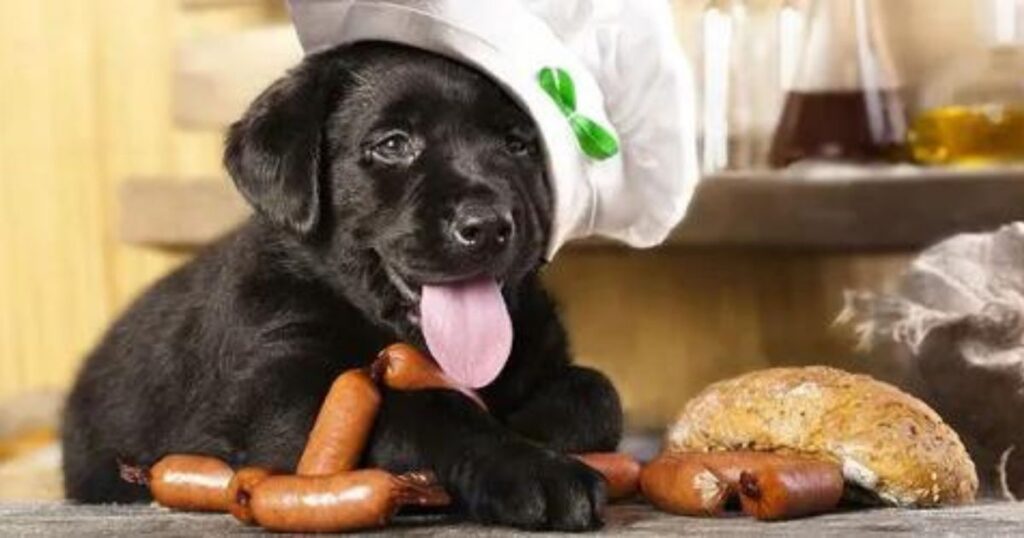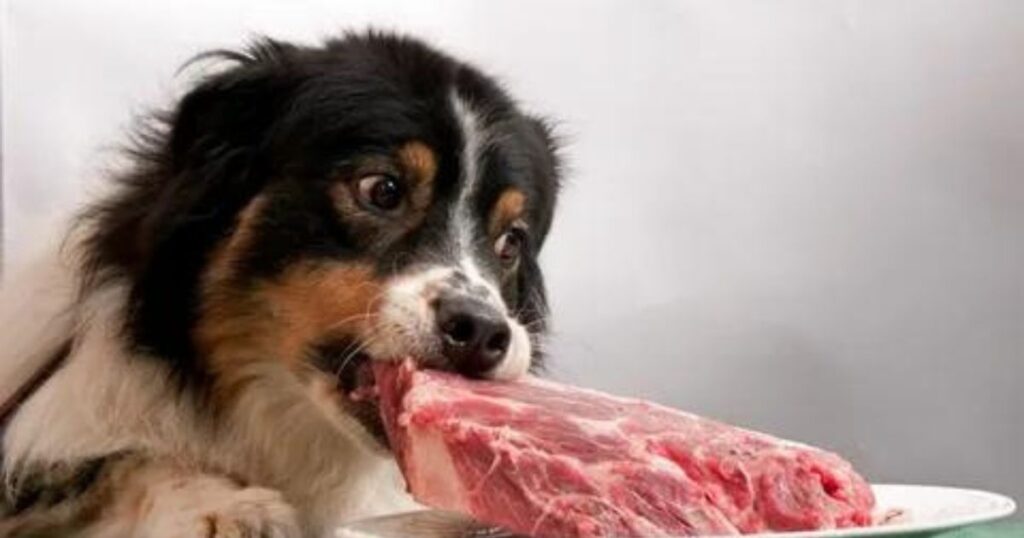Cooking pork for dogs involves thorough cooking to eliminate harmful bacteria. Avoid seasoning with ingredients like garlic or onion, which are toxic to dogs. Remove bones to prevent choking hazards, ensuring safe and nutritious consumption as part of a balanced diet.
Indulge your pup’s taste buds with scrumptious pork delights! Discover the easy steps to cook pork for your furry friend’s next meal. From tenderloin to ground pork, there’s a recipe to suit every canine palate. Treat your dogs to a homemade feast filled with nutritious goodness. Cook up some tail-wagging joy today!
“Want to treat your pup to some pork? Learn the safe and easy way to cook pork for dogs. From selecting the best cuts to proper cooking techniques, we’ve got you covered. Keep your furry friend happy and healthy with our simple guide. Let’s make mealtime tail-waggingly delicious.
Choose High-Quality Pork:
When selecting pork for your dogs, opt for lean cuts such as pork loin or tenderloin. Trim away excess fat, as too much fat can upset your dogs’s stomach. Avoid processed pork products like bacon or sausages, as they often contain additives and seasonings that can be harmful to dogs.
Selecting high-quality pork for your dogs involves prioritizing lean cuts such as pork loin or tenderloin, which are lower in fat and less likely to cause digestive issues. Trim away any excess fat before cooking to ensure optimal digestibility. Additionally, opt for fresh pork from reputable sources, checking for firmness, bright pink color, and a lack of foul odors or discoloration to indicate freshness. Choosing organic or hormone-free options when available further enhances the quality of the meat, minimizing the risk of your dogs ingesting unwanted additives or chemicals. By selecting the best pork options, you can provide your canine companion with a nutritious and delicious protein source that supports their health and well-being.
Cook Thoroughly:
Cooking pork thoroughly is paramount to ensure the safety of your canine companion. Raw or undercooked pork can harbor harmful bacteria such as Salmonella, E. coli, and parasites like Trichinella, which can lead to serious illness in dogs. To eliminate these risks, cook pork until it reaches an internal temperature of at least 145°F (63°C). Use a meat thermometer to accurately gauge the temperature and ensure thorough cooking. Pay careful attention to the cooking time, especially when preparing larger cuts of pork, to guarantee uniform heat penetration and eliminate any potential pathogens.
Properly cooked pork not only reduces the risk of foodborne illnesses but also enhances digestibility for your dogs. Thorough cooking breaks down proteins and renders fats, making them easier for your dogs’s digestive system to process. Additionally, cooking can enhance the flavor and texture of the pork, resulting in a more enjoyable dining experience for your furry friend. By prioritizing thorough cooking, you can provide your dogs with safe and nutritious pork meals that contribute to their overall health and well-being.
Seasoning Safely:
When seasoning pork for your dogs, it’s crucial to prioritize safety and avoid ingredients that could be harmful to their health. While plain, cooked pork is safe for dogs to eat, certain seasonings commonly used in human cooking can pose risks. Avoid seasoning pork with ingredients like onions, garlic, salt, or spices such as nutmeg, which can be toxic to dogs and may lead to adverse reactions or health issues. Instead, opt for simple seasoning options that are safe for canine consumption, such as a small amount of plain, unsalted broth or herbs like parsley or basil.
By seasoning pork safely, you can enhance the flavor of your dog’s meals without compromising their health. Stick to mild, dogs-friendly seasonings that add taste without introducing unnecessary risks. Always prioritize your dog’s well-being when preparing their meals, and consult with your veterinarian if you have any concerns about specific ingredients or seasonings. With safe seasoning practices, you can create delicious pork dishes that your furry friend will enjoy while ensuring their health and happiness.
Prepare in Bite-Sized Pieces:
Preparing pork in bite-sized pieces is essential to ensure your dogs can safely consume and enjoy their meal. Cutting the cooked pork into small, manageable pieces makes it easier for your dogs to chew and digest, reducing the risk of choking or gastrointestinal discomfort. Additionally, smaller pieces help prevent your dog from gulping down large chunks of food, promoting slower, more controlled eating and aiding in proper digestion.
Removing any bones from the pork before serving is also crucial to prevent choking hazards and potential injuries. Splintered bones can cause internal damage to your dog’s mouth, throat, or digestive tract if ingested. By preparing pork in bite-sized pieces and ensuring it is bone-free, you can provide your canine companion with a safe and enjoyable dining experience, minimizing the risk of accidents and promoting their overall well-being.
Monitor Portion Sizes:
Monitoring portion sizes is essential when incorporating pork into your dog’s diet to maintain their health and prevent overfeeding. While pork can be a nutritious protein source, it should be fed in moderation as part of a balanced diet. Consult with your veterinarian to determine the appropriate portion size of pork based on your dog’s size, weight, age, and individual dietary needs. Factors such as activity level and any existing health conditions should also be taken into consideration when determining portion sizes.
Overfeeding pork or providing excessive portions can lead to weight gain, obesity, and related health issues in dogs. It’s important to measure portions carefully and avoid feeding your dogs excessive amounts of pork, as well as any other foods, treats, or table scraps. By monitoring portion sizes and feeding pork in moderation, you can help your dogs maintain a healthy weight and enjoy the nutritional benefits of this protein source without risking their well-being.
Introduce Gradually:

When introducing pork into your dog’s diet, it’s essential to do so gradually to minimize the risk of digestive upset or allergic reactions. Start by incorporating small amounts of cooked pork into your dog’s meals and observe their response closely. Watch for any signs of gastrointestinal discomfort, such as vomiting, diarrhea, or changes in appetite or behavior. If your dogs tolerates the pork well, gradually increase the portion size over time until it becomes a regular part of their diet.
Introducing new foods slowly allows you to monitor your dog’s reaction and identify any potential sensitivities or allergies. Some dogs may have specific dietary intolerances or allergies to certain proteins, so it’s essential to proceed with caution when introducing new ingredients. If you notice any adverse reactions or concerns, consult with your veterinarian for guidance on how to proceed and whether pork is suitable for your dog’s dietary needs. By introducing pork gradually, you can ensure a smooth transition and help your dogs enjoy this protein source safely.
Safety Considerations:
Cooking Temperature:
Cooking pork to the appropriate temperature is crucial to ensure that it is safe for your dogs to consume. Pork should be cooked thoroughly to kill any harmful bacteria, parasites, or pathogens that may be present. The recommended internal temperature for cooked pork is at least 145°F (63°C) as measured with a meat thermometer inserted into the thickest part of the meat. This temperature ensures that the pork is fully cooked and safe for your dogs to eat, reducing the risk of foodborne illnesses.
Proper cooking temperature not only eliminates potential health risks but also improves the digestibility of pork for your dogs. Thorough cooking breaks down proteins and renders fats, making them easier for your dog’s digestive system to process. By cooking pork to the appropriate temperature, you can ensure that your dog’s meals are not only safe but also nutritious and enjoyable.
Handling Raw Pork:
Handling raw pork safely is essential to prevent the spread of harmful bacteria and foodborne illnesses. When preparing raw pork for your dog’s meals, it’s crucial to follow proper hygiene practices to ensure the safety of both you and your pet. Start by washing your hands thoroughly with soap and water before and after handling raw pork to prevent cross-contamination. Use separate cutting boards, utensils, and surfaces for raw pork to avoid contaminating other foods or kitchen equipment. Additionally, clean and sanitize any surfaces, utensils, or dishes that come into contact with raw pork to eliminate any potential bacteria.
Store raw pork in the refrigerator or freezer to maintain freshness and prevent spoilage. When thawing frozen pork, do so in the refrigerator overnight or use the defrost setting on your microwave to ensure even thawing and minimize the risk of bacterial growth. Avoid thawing pork at room temperature, as this can promote the growth of harmful bacteria. By handling raw pork safely and following proper food safety practices, you can minimize the risk of foodborne illnesses and ensure the health and well-being of both you and your canine companion.
Bone Safety:
Ensuring bone safety is crucial when feeding pork to your dogs, as bones can pose choking hazards or cause internal injuries if not handled properly. While cooked bones are often more brittle and may splinter easily, raw bones can also present risks, particularly if they are small or sharp. When serving pork to your dogs, it’s essential to remove any bones before feeding to prevent potential choking or digestive issues. Additionally, monitor your dogs closely while they are chewing on bones to ensure they do not break or splinter into small pieces that could be swallowed.
Instead of feeding bones directly, consider providing safer alternatives such as rawhide chews, nylon bones, or specially designed dental chews that are specifically formulated to promote dental health and satisfy your dog’s natural chewing instincts. These alternatives provide the benefits of chewing and help maintain oral hygiene without the risks associated with feeding bones. By prioritizing bone safety and offering safer chewing options, you can provide your dogs with a safe and enjoyable chewing experience while minimizing the risk of accidents or injuries.
Avoid Seasonings and Additives:
When preparing pork for your dog,s it’s important to avoid seasonings and additives commonly used in human cooking, as they can be harmful to your furry friend’s health. Ingredients like onions, garlic, salt, and spices such as nutmeg can be toxic to dogs and may lead to digestive issues or more severe health problems. Additionally, many commercial seasoning blends contain artificial flavors, preservatives, and other additives that can be detrimental to your dog’s well-being. To ensure your dog’s safety, stick to simple seasoning options such as plain, unsalted broth or canine-safe herbs like parsley or basil.
Opting for unseasoned pork not only minimizes the risk of adverse reactions but also allows you to better control the ingredients in your dog’s diet. By avoiding seasonings and additives, you can provide your dogs with a nutritious and flavorful meal without compromising their health. Prioritize your dog’s well-being by choosing plain, unseasoned pork and incorporating safe, dogs-friendly ingredients into their meals.
Moderation
Introduce pork into your dog’s diet in moderation, especially if they are not accustomed to it. Overfeeding pork or any new food can lead to digestive upset or other health issues.
Conclusion:
Cooking pork for your dogs can be a rewarding way to provide them with a nutritious and flavorful meal. By choosing lean cuts, preparing the pork properly, and following safe cooking techniques, you can ensure that your canine companion enjoys pork safely. With these guidelines in mind, you can treat your furry friend to a delicious pork feast while keeping their health and well-being a top priority.
Faqs
Why is it important to cook pork thoroughly for dogs?
Proper cooking eliminates harmful bacteria and parasites present in raw pork, ensuring it’s safe for your dogs to consume without risking foodborne illnesses.
What seasonings should I avoid when cooking pork for my dogs?
Ingredients like garlic, onion, salt, and nutmeg are toxic to dogs and should be avoided. Stick to canine-safe options like unsalted broth or herbs such as parsley or basil.
Why should I remove bones from pork before feeding it to my dogs?
Bones can pose choking hazards or cause internal injuries if swallowed or splintered. Removing bones ensures safe and enjoyable consumption for your furry friend.
How can I ensure I’m selecting high-quality pork for my dogs?
Opt for lean cuts like loin or tenderloin, preferably organic or hormone-free. Check for freshness by inspecting the color, firmness, and odor of the pork.
What’s the importance of introducing pork to my dog’s diet gradually?
Introducing new foods slowly allows you to monitor your dog’s reaction for any signs of allergies or digestive issues. Start with small amounts and gradually increase over time.
Conclusion
cooking pork for your dogs can be a delightful way to provide them with a nutritious and flavorful meal. By following safe cooking practices, selecting high-quality ingredients, and avoiding harmful seasonings and additives, you can ensure your canine companion enjoys pork safely. Remember to cook pork thoroughly, remove bones, and introduce it gradually into your dog’s diet to minimize any potential risks or adverse reactions. With careful attention to detail and a focus on your dog’s well-being, you can create delicious pork dishes that contribute to their overall health and happiness. So go ahead, treat your furry friend to some tail-wagging joy with a homemade pork feast—they’ll thank you with endless love and affection!
click on this link to get more information “How To Cook Porterhouse Steak On The Stove?“


